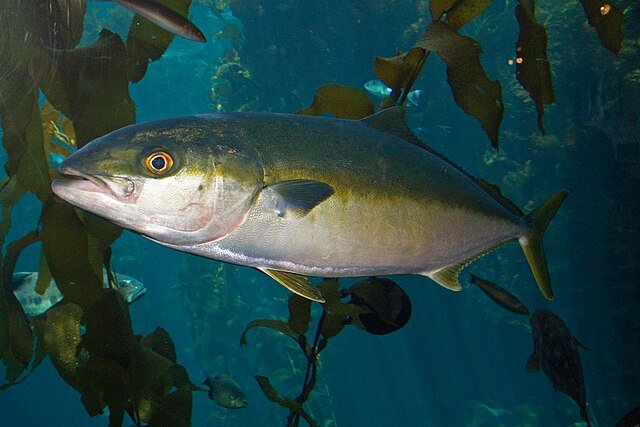
The United States has long had a voracious appetite for seafood, but a significant portion of its consumption is met through imports, contributing to a trade deficit. To address this issue, researchers have been exploring the potential of domestic aquaculture to produce marine fish species that can meet consumer demand.
Researchers from the University of California Agriculture and Natural Resources, the Virginia Seafood Agricultural Research and Extension Center, and Engle-Stone Aquatic LLC explored the factors that influence consumer purchasing intentions toward marine fish species identified as candidates for commercial production through aquaculture in the U.S.
Government Support and Industry Challenges
The U.S. government has recognized the importance of aquaculture and has taken steps to support its development. Regulations have been implemented to ensure sustainability and safety, and federal grant programs have been established to fund research and development. Additionally, there have been recent efforts to streamline the permitting process and reduce regulatory burdens.
Despite these supportive measures, the U.S. aquaculture industry faces several challenges. One of the most significant is competition from low-cost imports, which can make it difficult for domestic producers to compete on price. Additionally, there is a lack of market information for many potential marine fish species, making it challenging to develop effective marketing strategies.
Consumer Preferences and Market Opportunities
Understanding consumer preferences is essential for the success of any aquaculture venture. Studies have shown that U.S. consumers are increasingly willing to pay a premium for locally sourced and sustainably produced seafood. This presents a significant opportunity for domestic aquaculture producers to capture market share.
However, it is also important to recognize that consumer preferences can change over time. The decline in commercial landings of certain species may have led to a shift in consumer preferences, and it is necessary to evaluate whether a market for these species still exists.
Diversifying Seafood Options
The U.S. seafood market is currently dominated by a relatively small number of species. By introducing new farmed species, the industry can diversify its offerings and cater to a broader range of consumer tastes. This can also help reduce dependence on imported seafood and improve food security.
A Survey of Seafood Consumers
To gain insights into consumer preferences and potential market acceptance, researchers surveyed 818 seafood consumers in the southeastern United States. The survey focused on twelve promising marine fish species, including Atlantic cod, black sea bass, California halibut, California yellowtail, Florida pompano, redfish, red snapper, southern flounder, spotted seatrout, striped bass, summer flounder, and white seabass.
Stay Always Informed
Join our communities to instantly receive the most important news, reports, and analysis from the aquaculture industry.
Key Factors Influencing Purchase Decisions
The study found that several factors significantly influenced the likelihood of consumers purchasing these species:
- Origin and Quality: Consumers who prioritized the origin and quality of the fish were more likely to purchase a variety of species, including red snapper, striped bass, Atlantic cod, southern flounder, Florida pompano, California yellowtail, black sea bass, California halibut, and white seabass.
- Price: Consumers who considered price to be important were more likely to purchase California halibut, redfish, red snapper, white seabass, black sea bass (only in supermarkets), and summer flounder (only in supermarkets).
- Consumption Frequency: Frequent consumers of Atlantic cod, southern flounder, California halibut, redfish, summer flounder (only in supermarkets), and California yellowtail (only in supermarkets) were more likely to purchase these species.
- Seasonality and Demographics: Factors such as seasonality in consumption and demographic characteristics, including income, age, race, and state of residence, also influenced purchasing decisions.
Demographic Influences
Demographic data such as income, age, race, and state of residence also affected consumer preferences. For example, younger consumers might be more inclined to adopt sustainable seafood options, while those with higher incomes might be willing to pay a premium for top-quality products.
Conclusion
The findings of this study suggest that there is strong market potential for locally produced marine fish in the United States. By understanding consumer preferences and addressing their concerns related to source, quality, and price, aquaculture producers can play a vital role in reducing the country’s seafood trade deficit and providing consumers with fresh, sustainable, and delicious seafood options.
The study was funded by the United States Department of Agriculture-Agricultural Research Service Cooperative Agreement.
Contact
Michael H. Schwarz
Virginia Seafood Agricultural Research and Extension Center
Virginia Tech, Hampton, USA
Email: mschwarz@vt.edu
Reference
Agyeman, D. A., Van Senten, J., Engle, C. R., & Schwarz, M. H. (2025). Consumer likelihood to purchase farmed marine finfish with potential for commercialization in the United States. Aquaculture, 595, 741681. https://doi.org/10.1016/j.aquaculture.2024.741681
Editor at the digital magazine AquaHoy. He holds a degree in Aquaculture Biology from the National University of Santa (UNS) and a Master’s degree in Science and Innovation Management from the Polytechnic University of Valencia, with postgraduate diplomas in Business Innovation and Innovation Management. He possesses extensive experience in the aquaculture and fisheries sector, having led the Fisheries Innovation Unit of the National Program for Innovation in Fisheries and Aquaculture (PNIPA). He has served as a senior consultant in technology watch, an innovation project formulator and advisor, and a lecturer at UNS. He is a member of the Peruvian College of Biologists and was recognized by the World Aquaculture Society (WAS) in 2016 for his contribution to aquaculture.



